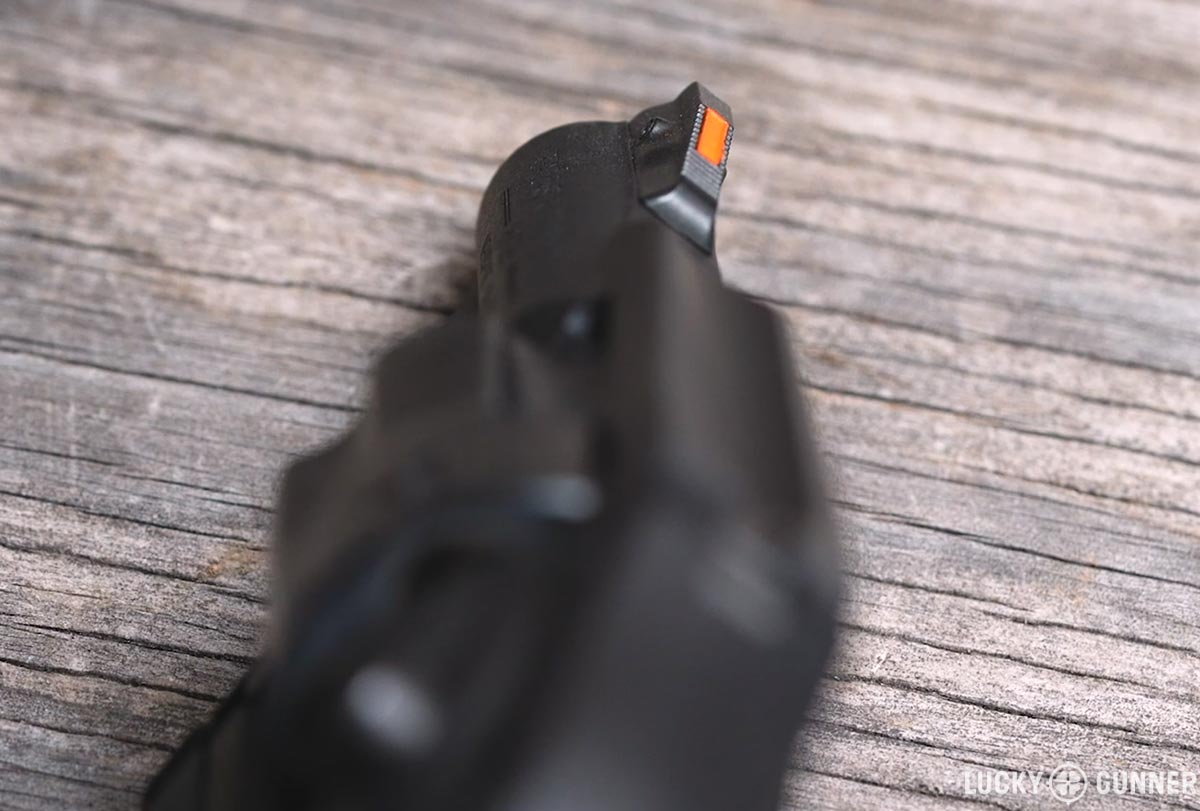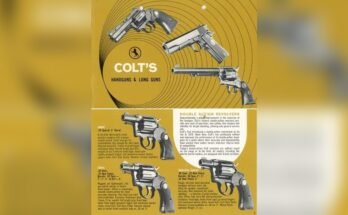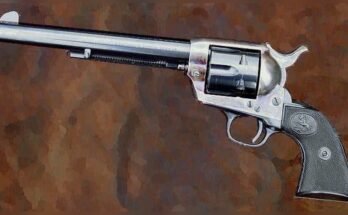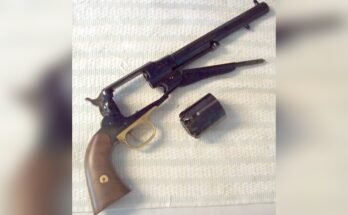If you own a snub-nose revolver, you probably know it’s a powerful tool—but aiming it accurately can be tricky. Its short barrel and unique design mean traditional aiming methods don’t always work well.
So, how do you make sure your shots hit the mark every time? You’ll discover practical tips and simple techniques that can help you aim your snub-nose revolver more effectively. Whether you’re a beginner or looking to improve your skills, these insights will boost your confidence and precision.
Keep reading to unlock the secrets to mastering your aim.

Choosing The Right Snub-nose Revolver
Choosing the right snub-nose revolver is key to aiming it well. The right revolver fits your hand and shooting style. It feels comfortable and easy to control. This makes aiming faster and more accurate. Consider factors like size, weight, and balance. These affect how steady you hold the gun. A well-chosen revolver helps you shoot confidently and safely.
Caliber Considerations
Caliber affects recoil and stopping power. Smaller calibers have less recoil, easier to control. Larger calibers offer more power but kick harder. Choose a caliber you can handle comfortably. Practice with different calibers to find your best fit. Balance power and control for accurate aiming.
Grip Styles
Grip style influences how steady you hold the revolver. Rubber grips absorb recoil and improve comfort. Wooden grips offer classic feel but less shock absorption. Some grips have finger grooves for better hold. Pick a grip that feels natural in your hand. Good grip control leads to better aim.
Sight Options
Sights help you line up your shot quickly. Fixed sights are simple and durable. Adjustable sights allow fine-tuning for accuracy. Some revolvers have night sights for low light. Choose sights that match your shooting needs. Clear sights make aiming faster and easier.

Basic Shooting Stance
A solid basic shooting stance forms the foundation of aiming a snub-nose revolver effectively. It helps control recoil and improves accuracy. A good stance feels natural and steady. It supports your body and keeps you balanced.
Focus on how your body, hands, and breathing work together. These elements make aiming easier and shooting safer.
Body Positioning
Stand with your feet shoulder-width apart. Point your toes slightly outward for balance. Keep your knees slightly bent. This stance absorbs recoil better. Lean your upper body slightly forward. It helps control the gun’s movement. Keep your shoulders relaxed but firm. A straight back supports steady aim.
Hand Placement
Hold the revolver with both hands. Your dominant hand grips the handle firmly but not too tight. The support hand wraps around the dominant hand. Keep thumbs pointing forward along the frame. This grip reduces muzzle rise. Keep your fingers clear of the trigger until ready to shoot. A good grip helps manage recoil and improves control.
Breathing Techniques
Control your breathing to steady your aim. Take slow, deep breaths to relax. Exhale halfway and hold your breath briefly. This pause helps reduce body movement. Fire during this still moment for better accuracy. Avoid shallow or fast breaths. They cause shaking and reduce control.
Aiming Techniques For Snub-nose Revolvers
Aiming a snub-nose revolver requires specific techniques because of its short barrel. This type of handgun is compact and easier to carry but can be harder to aim precisely. Learning the right aiming methods helps improve accuracy and confidence while shooting.
Focus and steady hands are important. Small movements can change where the bullet hits. Understanding how to use sights and different aiming methods makes a big difference in shooting well.
Using The Front Sight
The front sight is the main point to aim with a snub-nose revolver. Look directly at the front sight, keeping it clear and sharp. Align it with the target. The front sight should sit in the middle of the rear sight notch. This helps guide the bullet to the target.
Keep your eyes focused on the front sight, not the target or rear sight. This focus improves accuracy. Practice holding the gun steady and aligning the sights quickly for better results.
Focus And Sight Alignment
Proper sight alignment means the front and rear sights line up evenly. The tops of both sights must be level. The front sight should be centered between the rear sight’s edges. This creates a clear line from your eye to the target.
Focus on the front sight while keeping the target blurry. This method reduces aiming errors. Consistent sight alignment trains your brain to shoot accurately each time.
Point Shooting Method
Point shooting works well in close-range situations. It uses instinct and muscle memory instead of sights. Hold the revolver firmly and aim with your hand and arm’s natural position.
Look at the target, not the sights. Your body guides the gun toward the target. This method is faster but needs practice to build trust in your aim.
Managing Recoil
Managing recoil is key to aiming a snub-nose revolver effectively. The short barrel and light weight cause more kick. Controlling this recoil helps keep shots on target. It also reduces flinching and improves accuracy over time.
Strong hands, steady follow-through, and smooth trigger pulls all work together. These skills help control the gun’s movement after each shot. Let’s explore each part in detail.
Grip Strength
Hold the revolver firmly with both hands if possible. Wrap your fingers tightly around the grip. Press your support hand against your shooting hand. A strong grip helps absorb recoil energy. It stops the gun from jumping upward and sideways. Avoid gripping too tight to prevent shaking. Find a balance that feels secure and steady.
Follow-through
Keep your sights on target after the shot fires. Do not lower the gun immediately. Follow-through helps you see where the bullet hits. It also trains your muscles to stay steady. Maintain your stance and grip while the gun recoils. This practice builds consistent shooting habits. It reduces the chance of flinching and jerking the trigger.
Trigger Control
Pull the trigger smoothly and steadily. Avoid yanking or slapping the trigger quickly. A slow, controlled pull prevents the gun from moving off target. Practice squeezing the trigger until the shot breaks. Keep your finger steady and relaxed between shots. Good trigger control reduces recoil effect and improves accuracy.
Practice Drills
Practice drills help improve your aim with a snub-nose revolver. They build muscle memory and increase confidence. Regular drills make your shooting faster and more accurate. Each drill focuses on different skills needed for effective aiming. Practice safely and consistently for the best results.
Dry Fire Exercises
Dry fire means practicing without live ammunition. Use snap caps or an empty gun for safety. Aim at your target and pull the trigger slowly. Focus on your grip, sight alignment, and trigger control. This drill helps you correct mistakes without wasting ammo. Practice dry fire regularly to build steady hands.
Live Fire Drills
Live fire drills involve shooting real bullets at a target. Start with slow, controlled shots to focus on accuracy. Keep your stance steady and sights aligned. Check your shot placement after each round. Adjust your aim based on your results. This drill improves your real-world shooting skills.
Speed And Accuracy Training
Speed and accuracy drills teach you to shoot fast and precise. Use a timer or stopwatch for each shot. Begin with slow shots and gradually increase speed. Keep your focus on hitting the target center. These drills improve your reaction time and control. Practice often to balance speed with accuracy.

Common Mistakes To Avoid
Aiming a snub-nose revolver takes practice and focus. Many shooters make simple errors that hurt accuracy. Avoiding these mistakes helps you shoot better and safer. Below are common errors to watch out for.
Flinching
Flinching is a sudden, involuntary movement before or during the shot. It often happens because of fear or anticipation of recoil. Flinching causes poor aim and missed targets. Stay calm and practice slow, steady trigger pulls to reduce flinching. Dry firing can help you build confidence and control.
Poor Grip
A weak or uneven grip reduces control over the revolver. It can cause the gun to twist when fired. Use a firm grip with both hands if possible. Keep your fingers wrapped around the handle securely. A good grip improves stability and accuracy. Practice holding the revolver until it feels natural and steady.
Overlooking Sight Picture
Many shooters ignore the sight picture or rush the shot. The front sight should be centered and level with the rear sight. Focus on the front sight, not the target or rear sight. Clear sight alignment helps you aim precisely. Take your time to line up the sights before pulling the trigger.
Maintenance Tips For Consistent Accuracy
Keeping your snub-nose revolver in good shape helps maintain its accuracy. Regular maintenance avoids problems that affect aiming. Simple care steps can keep your revolver shooting true and reliable.
Cleaning The Barrel
Clean the barrel after every use. Use a bore brush to remove dirt and residue. This keeps the barrel smooth and free of obstructions. A clean barrel helps bullets fly straight.
Checking Sights
Check the sights often for damage or misalignment. Even small shifts affect your aim. Tighten screws if needed. Replace worn sights to maintain clear, precise targeting.
Lubrication
Apply a light coat of oil to moving parts. This reduces friction and wear. Avoid over-oiling, which can attract dirt. Proper lubrication ensures smooth trigger action and reliable function.
Frequently Asked Questions
How Do I Properly Grip A Snub-nose Revolver?
Grip the revolver firmly with your dominant hand. Place your thumb and fingers around the frame for control. Use your support hand to stabilize and reduce recoil. A solid grip improves accuracy and helps manage the revolver’s quick recoil.
What Is The Best Aiming Technique For Snub-nose Revolvers?
Focus on the front sight while keeping the target blurry. Align the front sight with the rear sight notch. Maintain a steady sight picture and control your breathing. This technique enhances precision despite the short barrel length.
How Can I Improve Accuracy With A Snub-nose Revolver?
Practice regularly to build muscle memory and control recoil. Use proper stance and grip for stability. Aim small, shoot small—focus on precise sight alignment. Dry fire drills also help improve trigger control and aiming skills.
Are Snub-nose Revolvers Harder To Aim Than Longer Barrels?
Yes, the shorter barrel offers a shorter sight radius, making aiming more challenging. This requires more focus on front sight and trigger control. However, with proper technique and practice, accurate shooting is achievable.
Conclusion
Aiming a snub-nose revolver takes practice and patience. Keep your grip firm and steady. Focus on the front sight, not the target. Control your breathing to stay calm and accurate. Use short, smooth trigger pulls to avoid jerking. Regular practice builds confidence and improves aim.
Remember, safety always comes first when handling firearms. Small steps lead to better shooting skills. Stay consistent and keep practicing often. Your aim will get better with time and effort.


